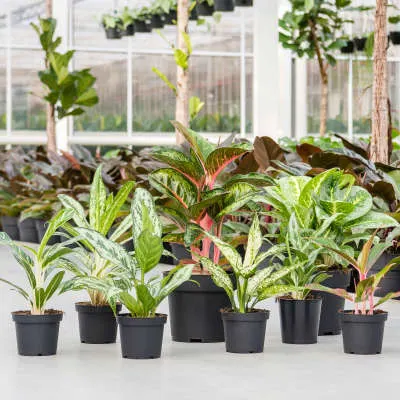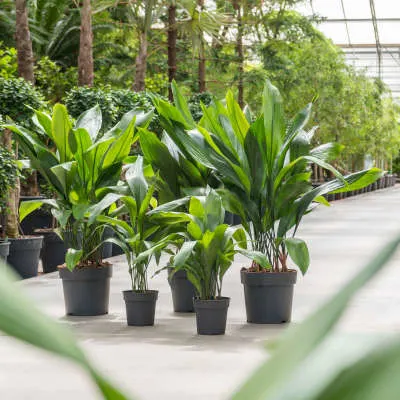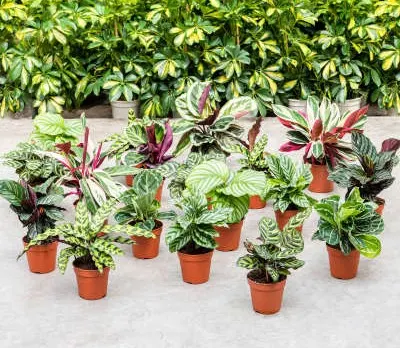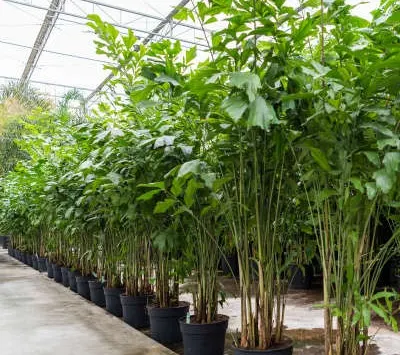In the winter months, the number of sunlight hours per day continues to decrease. For many plants, this means they don't get enough light to grow, but fortunately there are plenty of plants that can stand some shade. From the Aglaonema to the ZZ plant; in this blog we tell you all about plants that can appreciate a darker location.
What is a dark or shade spot?
All plants basically need light to grow and there is almost no plant that will survive in a spot without any light. Those plants that are fine in a shade spot will probably grow better in a place with more light. In certain rooms or during certain seasons, however, it can be difficult to provide plants with a bright location. Plants that thrive in a darker spot or partial shade can then be a solution. By a dark or shady spot, we mean a place in a room where little daylight enters, for example because there is only a small window. It is also often quite dark near a north-facing window, or several metres away from an east-facing window.
Aglaonema
The Aglaonema is a plant recognisable mainly by its large leaves that grow almost straight out of the ground. Because the plant barely has a stem, it stays quite low; it will not grow taller than one metre. In its original habitat, in the jungles of Southeast Asia, the Aglaonema grows under the leaves of larger trees and plants. As a result, the plant has become accustomed to shade and does well in a dark place. However, Aglaonema will grow best when it does get a few hours of sunshine a day. When determining the location, it is also important to take into account the different types of Aglaonema. The varieties with mainly green and white leaves, such as 'Freedman' and 'Key Lime', can stand a darker spot better than the colourful varieties 'Jungle Red' or 'Crete'. Whether the plant is happy with its location is easy to tell from its leaves. Yellow leaves are a sign of too much light and drooping leaves are a sign of too little light.
Read more about the care of the Aglaonema here

Aspidistra elatior
A strong plant that grows precisely in dark corners, that is the Aspidistra elatior. Originally, the plant grows as a ground cover in Japanese and Taiwanese forests, i.e. in the shade of other trees and plants. A strong shade plant, Aspidistra elatior was used as an interior plant as early as the nineteenth century, in rooms that were often poorly lit, draughty and dark. For instance, the plant is known to have stood in shoemakeries, butcher shops and restaurants. The Aspidistra has developed into a rock-solid plant that can survive on almost no light. Therefore, the plant cannot stand sunlight and a sunny location should definitely be avoided. As for further care, the Aspidistra is an easy plant that doesn't need too much water. Let the soil dry out a little before the next watering and make sure the plant does not stand with its roots in the water.
View our range of Aspidistra elatior here

Calathea
The Calathea is native to South America, where it grows in the jungles of the Amazon region. Because the plant does not grow very large, about one metre, the Calathea originally has a rather sheltered spot in the shade of higher plants and trees. As a result, the plant cannot cope well with sunlight and prefers a darker spot, such as near a north-facing window. The most important thing for good Calathea care is to create high humidity. Indeed, due to their tropical origins, these plants need a fairly warm environment with high humidity. Calatheas should therefore be watered regularly.
In this blog you can read our other care tips for the Calathea

Caryota mitis
The Caryota mitis is also known as the Fish Tail Palm or the Fin Palm. The plant owes this name to its unique triangle-shaped leaves that split at the ends like a fish tail. The palm originally grows in Southeast Asia and despite this tropical environment with hot temperatures and high humidity, it does well as an interior plant. Sunlight results in brown spots on the leaves and a pale appearance in Caryota mitis. The right position for this palm is therefore not in a light environment, but rather more in the shade. In a shady spot, spray the plant regularly so the leaves become clean and can absorb the incoming light better.
View our range of Caryota mitis here
